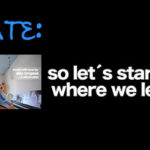
Alan Alda has been my “boyfriend” since Mash and when I found out he was smart and a good husband, in addition to being adorable, he entered the main room of my Hall of Admiration.
Below Kevin Dickinson outlines Alda’s rule of three for effective communication. Considering how much material we skim and try to stuff into our brains daily, using this method might actually backfire and lead us to realize we don’t know what we are trying to communicate!
Check it out and have a good Spring Sunday!
Hug
Vicki P
3 Rules to Express Your Thoughts So Everyone Will Understand You (excerpt)
by Kevin Dickinson
(…)
Whether from public speaking or just having a heart-to-heart, life is full of these types of conversations. You’ve been there, I’ve been there, and Alan Alda has been there.
Though best known for his role on the 1970s sitcom M*A*S*H, Alda is a public speaker, science enthusiast, and long-time advocate for better science communication. He has interviewed scientists as the host of Scientific American Frontiers, won the AAAS Kavli Science Journalism Award, and founded the Alan Alda Center for Communicating Science at Stony Brook University.
In that time, he has developed a playbook of strategies to help people engage in conversation and voice their ideas clearly. If these tips can help biologists explain genetic drift, physicists Hawking radiation, or linguists anything about Chomskyan linguistics, then chances are they can help us express our thoughts and feelings when we need others to understand them the most.
1. Make no more than three points. The human brain can only store so much information in short-term memory. The oft-repeated number is seven items (or chunks). (…)
However, follow-up research suggests that short-term memory is far less robust, maxing out at a meager three to five items.
Alda (…) advises you to limit your conversation points to no more than three, allowing you and your partner to focus on the thought at hand while avoiding disruptive additions.
2. Explain difficult ideas in three different ways
As Alda (says)… if there’s something I think is not going to be that easy to get, I try to say it in three different ways. I think if you come in from different angles you have a better chance of getting a three-dimensional view of this difficult idea.”
One way to tap into this strategy is through metaphor. When Barbara Oakley was writing her book A Mind for Numbers, she reached out to professors who were highly ranked for their teaching skills. She discovered that across disciplines, the best professors were metaphor tacticians. They analogized key concepts or difficult ideas to better explain them.
According to Oakley, metaphors work by building on existing neural patterns established from previous learning. Those existing patterns then help create new neural networks for incorporating the new information. (…)
This strategy doesn’t dumb down the concept but instead makes it relatable and therefore easier to understand — getting at that “three-dimensional view” Alda champions. Other useful strategies can include examples, visuals, changing the frame of reference, and providing a this-not-that comparison.
3. Make important points three times
Repetition is a powerful communication tool because it helps us identify key information and transfer it from short-term to long-term memory.
When it comes to learning, the best kind of repetition is spaced out. Whether you’re memorizing a phone number or a complex physics equation, revisiting and applying the information over several weeks cements it in your brain by developing and strengthening the neural patterns where the information is housed. This process explains why flashcards are such an effective studying tool.
In some close-knit relationships, spaced repetition is a phenomenal tool. Teachers, parents, psychiatrists, or team managers can use it to return to and reinforce difficult ideas across many conversations.
(…) It’s why song, speech, and soliloquy writers use repetition so liberally. Think Martin Luther King, Jr.’s “I Have a Dream” speech, the many soliloquies of Shakespeare, and, of course, Beyonce’s “Single Ladies.”
Express your thoughts clearly through connection
Alda suggests that the true heart of communication is connection. Your goal shouldn’t be to enthrall your audience with a creative metaphor, meaningful pause, or witticism. That’s rhetoric, not communication.
Ultimately, we have to build a connection deep enough for communication strategies to work. These connections then help you understand when you need to slow down, repeat a key idea, or explain things from another angle.
KEY TAKEAWAYS
- Whether you are a public speaker or having a heart-to-heart, it can be challenging to express your thoughts clearly.
- Alan Alda recommends making no more than three points, explaining difficult ideas in three ways, and repeating key points three times.
- However, these strategies will fall flat if not paired with an honest desire to connect with other people.






























